i am trying to do an algorithm that verify prime numbers. To do this i have to make a circuit using RTL Design method, i am using the algorithm below to get the prime number:
int prime (int x) {
int i, div;
div = 0;
for (i = 1; i <= x; i++){
if (mod(x, i) == 0)
div++;
}
if (div == 2)
return 1; // PRIME
else
return 0; // NPRIME
}
To implement this solution I created two blocks: Datapath and Control like the image below:
My datapath has 4 intern blocks:
for_reg --> register that control the loop for of the prime algorithm (have a flag to indicate when the loop ends)
buffer --> Makes the output equal the input
modulo --> Get the mod of the div from the two inputs
comp --> Compare the output from modulo (if equal 0 the output of compare goes 1 else 0).
My control works comparing the input C (input C <= output_comp), if the comparison value is equal 1 I increment the signal div, after this i verify the value of the input flag, if is equal 1 i go to the finish state of the state machine that verify if the value of signal div is equal 2, if it is the output of control gets value 1, if not gets value 0 (1 - prime , 0 - not prime).
My problem is in the output of control block that stays always in 0. I've simulated all blocks separated and it seems to work correctly.
I believe the error is in the for_reg or in the control block, because the other blocks are simple and like I said before, its working correctly.
Below the simulation of the mod block:
PS.: I've used a state machine to create this block, when it gets on the final state automatically returns to the first state, so it's because of that the output stays always 0 and 3.
Below the codes from control and for_reg:
LIBRARY IEEE;
USE IEEE.std_logic_1164.ALL;
USE IEEE.std_logic_unsigned.ALL;
use IEEE.std_logic_arith.ALL;
ENTITY verifica_primo_control IS
PORT (
i_CLK : IN STD_ULOGIC;
i_RST : IN STD_LOGIC;
i_C : IN STD_LOGIC;
i_FLAG : IN STD_LOGIC;
o_DOUT : OUT STD_LOGIC
);
END verifica_primo_control;
ARCHITECTURE arch_1 OF verifica_primo_control IS
TYPE state_type IS (s0, s1, s2, s3);
SIGNAL stateT : state_type;
SIGNAL w_AUX : integer;
BEGIN
PROCESS(i_CLK)
BEGIN
IF rising_edge(i_CLK) THEN
IF (i_RST = '1') THEN
stateT <= s0;
w_aux <= 0;
ELSE
CASE stateT IS
when s0 => IF (i_C = '1') THEN
stateT <= s1;
ELSE
stateT <= s3;
END IF;
when s1 => w_AUX <= w_AUX +1;
if (i_FLAG = '1') then
stateT <= s2;
else
stateT <= s0;
end if;
when s2 => IF (w_AUX = 2) THEN
o_DOUT <= '1';
ELSE
o_DOUT <= '0';
END IF;
when s3 =>
if (i_FLAG = '1') then
stateT <= s2;
else
stateT <= s0;
end if;
END CASE;
END IF;
END IF;
END PROCESS;
END arch_1;
LIBRARY IEEE;
USE IEEE.std_logic_1164.ALL;
USE IEEE.std_logic_unsigned.ALL;
use IEEE.std_logic_arith.ALL;
ENTITY for_reg IS
PORT (
i_CLR : IN STD_LOGIC;
i_CLK : IN STD_ULOGIC;
i_X : IN UNSIGNED (7 downto 0); -- number input to verify if its prime
i_I : IN UNSIGNED (7 downto 0) ;
o_FLAG : OUT STD_LOGIC;
o_II : OUT UNSIGNED (7 downto 0)
);
END for_reg;
ARCHITECTURE arch_1 OF for_reg IS
signal w_AUX : unsigned (7 downto 0);
BEGIN
PROCESS(i_CLK)
BEGIN
IF rising_edge(i_CLK) THEN
IF (i_CLR = '1') THEN
o_II <= "00000000";
w_AUX <= "00000000";
o_FLAG <='0';
ELSIF (i_CLR ='0' AND i_I < i_X) THEN
w_AUX <= i_I;
o_II <= w_AUX + "00000001";
o_FLAG <='0';
ELSIF (i_CLR = '0' AND i_I = i_X) THEN
o_II <= i_I;
o_FLAG <= '1';
END IF;
END IF;
END PROCESS;
END arch_1;
Like i said before, i believe the error is in one of this two blocks, i believe with that codes is possible verify where is the error. If this is not enough to have the MCVE warn me that i will update the post with the the other codes that is necessary to verify the error.
I am using the quartus II simulator, so I don't have a testbanch for this, I put all the test signals manually.




